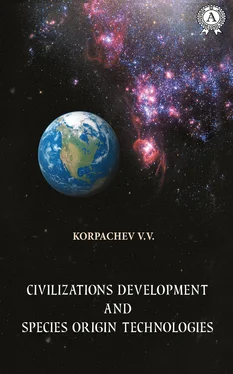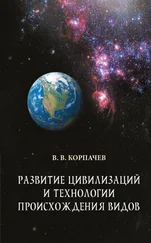The reference to the religions’ gods allowed everyone to answer the most complex and different questions. M. Lomonosov said it well:
«It is easy to be philosophers, having learned three words by heart: God has created in such a way, and giving these words as an answer instead of all the reasons». As for science, such answers are unacceptable. Religion based on faith rejects doubts. Faith is a simplified way to explain the surrounding world phenomena difficult to understand by God’s activity, while religion is a way to cash in on this faith.
From a scientific point of view, the hypothesis about the God’s existence (and «soul», «spirit», «heaven», «hell», concepts related to it, etc.) cannot be verified. Therefore, any speculations about the God’s existence are not scientific by their nature. While science widely uses observation in pursuit of the truth, theology perceives the truth through divine revelation and faith. In science the truth always contains the hypothesis element, preliminary character, but the divine truth is an absolute for the believer. Moreover, the generally accepted evidence of the God’s existence has not been formulated as the definition of God has never been generally accepted. For the same reason, the generally accepted evidence of the God’s non-existence cannot be formulated. However, the issue of His existence remains the subject of lively philosophical disputes and discussions.
Clinton Richard Dawkins, the author of «The God Delusion», published in 2006, argues that the likelihood of any supernatural creator is extremely low and the religious faith is an illusion. According to him, «God is not a convincing explanation, so we can only wait and hope that someone will offer something better».
1.2. SCIENTIFIC HYPOTHESES OF THE LIFE OCCURRENCE ON EARTH
There are a number of theories to explain the life occurrence on the planet that are difficult to prove their accuracy. A lot of these theories and their points to explain the existing species diversity exploit the same data but emphasize the data different aspects.
The assumption of spontaneous life occurrence was common in ancient China, Babylon and Egypt as an alternative to the divine creation of the world. Aristotle, on the basis of his own observations, joined all organisms in a continuous row. He stated that «Nature makes the transition from lifeless objects to animals with such a smooth sequence, placing creatures living without being animals between them so that one can hardly notice the differences between neighboring groups due to their close proximity». According to Aristotle’s hypothesis of spontaneous nucleation, certain «particles» of a substance contain a certain «active principle (source)», which can lead to the living organism’s creation. He falsely believed that source was also present in sunlight, mud, and rotting meat. With the spread of Christianity, the theory of the life’s spontaneous origin was not recognized with the spread of Christianity, but it continued its existence as an idea for many years.
According to the stationary state theory, Earth never occurred, but always existed and was always able to support life, and if it changed, the changes were very insignificant. Species also never occurred, they always existed, and each species has only two options − either its quantity change or extinction. Most of the arguments in favour of this theory are associated with inexplicable gaps in the fossil record. This theory is most precisely developed in this trend.
According to the panspermia hypothesis formulated by Herman Richter in 1865, life could have occurred one or more times at different times and in different areas of the Galaxy or the Universe. This idea was supported by G. Helmholtz, S. Arrhenius and W. Thompson were among this theory supporters.
S. Arrhenius believed that life did not occur on our planet, but was brought in by spores travelling through the outer space. After getting on a planet with suitable natural conditions, spores are transformed into cells, and cells give birth to life. S. Arrhenius having carried out calculations, in particular, proved the fundamental possibility of the bacterial spores transfer from planet to planet under the influence of the light pressure. The discovery of cosmic rays and the clarification of the radiation effect on biological objects have greatly weakened this hypothesis’s position.
Sankar Chatterjee, a professor of Texas Tech University and the University Paleontology Museum’s curator, having analyzed information about the early geological history of the planet and compared these data with various theories of chemical evolution, arrived at a conclusion that the simple life early forms occurrence on the planet would be impossible without the participation of comets and meteorites that fell on it. Organic compounds capable of the development of life’s launch were discovered in them during the study. This circumstance, to this or that degree, was taken into account by different authors of the life occurrence hypotheses. The fact of the organic substances in meteorites availability deserves special attention. According to the nuclear geochronology, their age stands for 4.6-4.5 billion years, which basically coincides with the age of Earth and the Moon. Hydrocarbons, carbohydrates, purines, pyrimidines, amino acids, i.e., chemical compounds that make up living matter constituting its base, have been found in meteorites. Also, more than a hundred different minerals have also been discovered. Furthermore, 20 minerals not presented in Earth’s crust have been found in the meteorites. Carbides, sulfides, etc. are among them. The proximity to the organic complexes composition of biological origin turned out to be so great that some authors suggested that living organisms were found directly in the very meteorites in the past. However, careful examination of organic compounds taken from meteorites has not confirmed the presence of optical activity, which indicates their abiogenous origin. At the same time, the data obtained demonstrated that the organic compounds’ formation in the Solar system on the early stages of its development was a typical and massive phenomenon. However, the outer space chemicals and most of the Solar system bodies do not have the complexity of living matter, as is observed on Earth.
Academician V.I. Vernadsky also adhered to the panspermia hypothesis. In his opinion, life in the Universe is spreading with the help light quanta. As for Earth, life could have occurred when a meteorite being a particle of other planet that disintegrated as a result of some kind of disaster hit our planet. The fragments of such a planet with bacteria or other microorganisms could go beyond the planet and get to Earth.
Fred Hoyle and Chandra Wickramasinghe, while studying the interstellar matter properties, noted that the cosmic dust’s infrared spectra are very similar to the organic matter’s spectra, to the dry bacteria, in particular. These scientists’ observations served the basis for putting forward the idea of the microorganisms’ possible existence in the interstellar space cosmic dust’s clouds. They suggested that within the period of 4.6−3.8 billion years ago, the life occurrence on Earth was the result of the microorganisms’ ingress from outer space. According to their calculations, a large number of space spores annually enter the upper atmosphere of Earth as the remnants of solid material scattered in the solar system. According to their ideas, comets are the life embryos’ carriers that were earlier formed in the interstellar space.
Francis Crick, the Nobel Prize winner for the DNA code discovery, also suggested in his book «Life Itself: Its Origin and Nature» (1982) that life on Earth did not occur by itself, it occurred through controlled panspermia, that is, through Earth’s deliberate colonization by microorganisms delivered on unmanned spacecraft by a developed alien civilization, which may have tried to perform terraforming for future colonization.
Читать дальше












